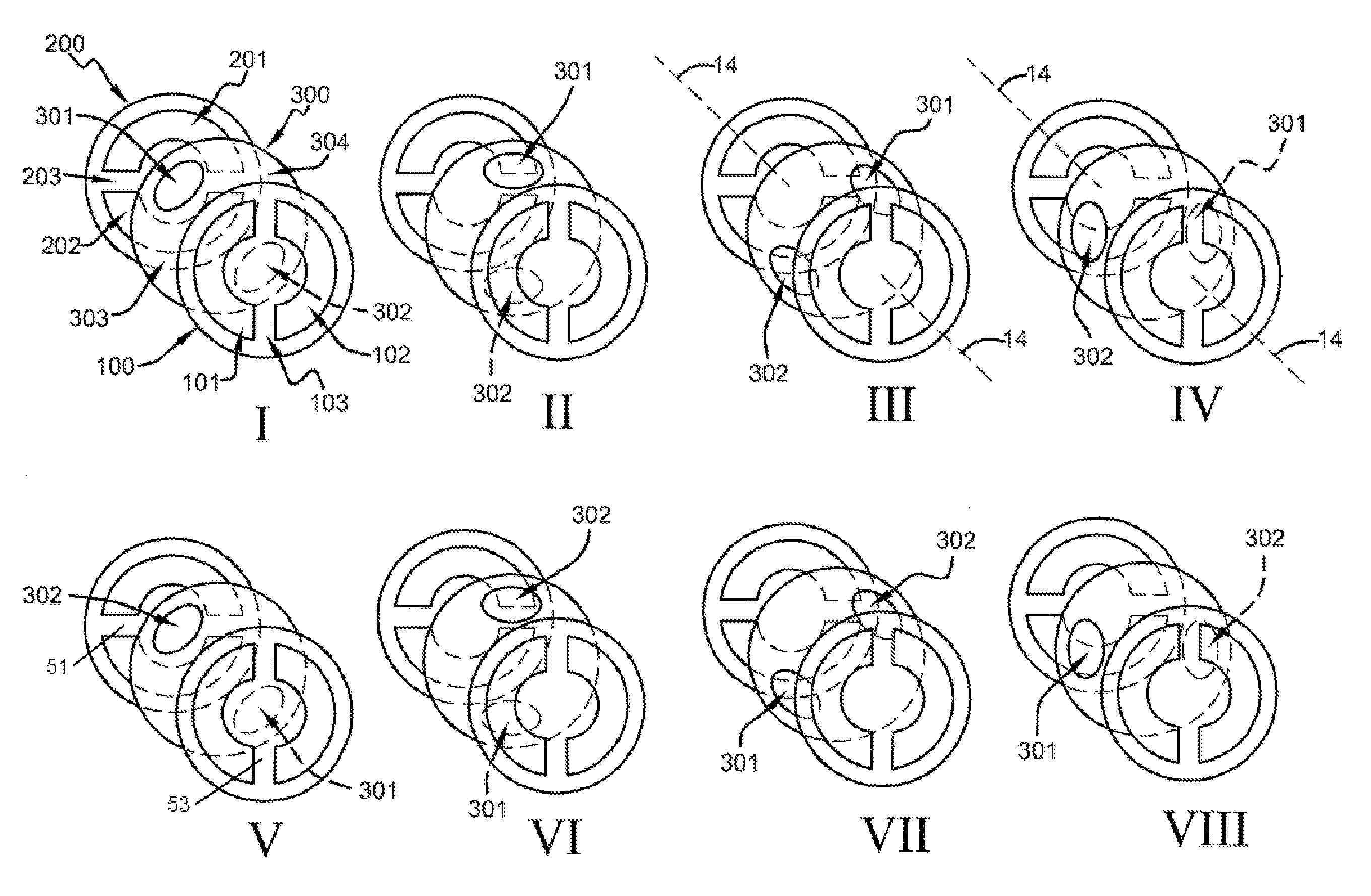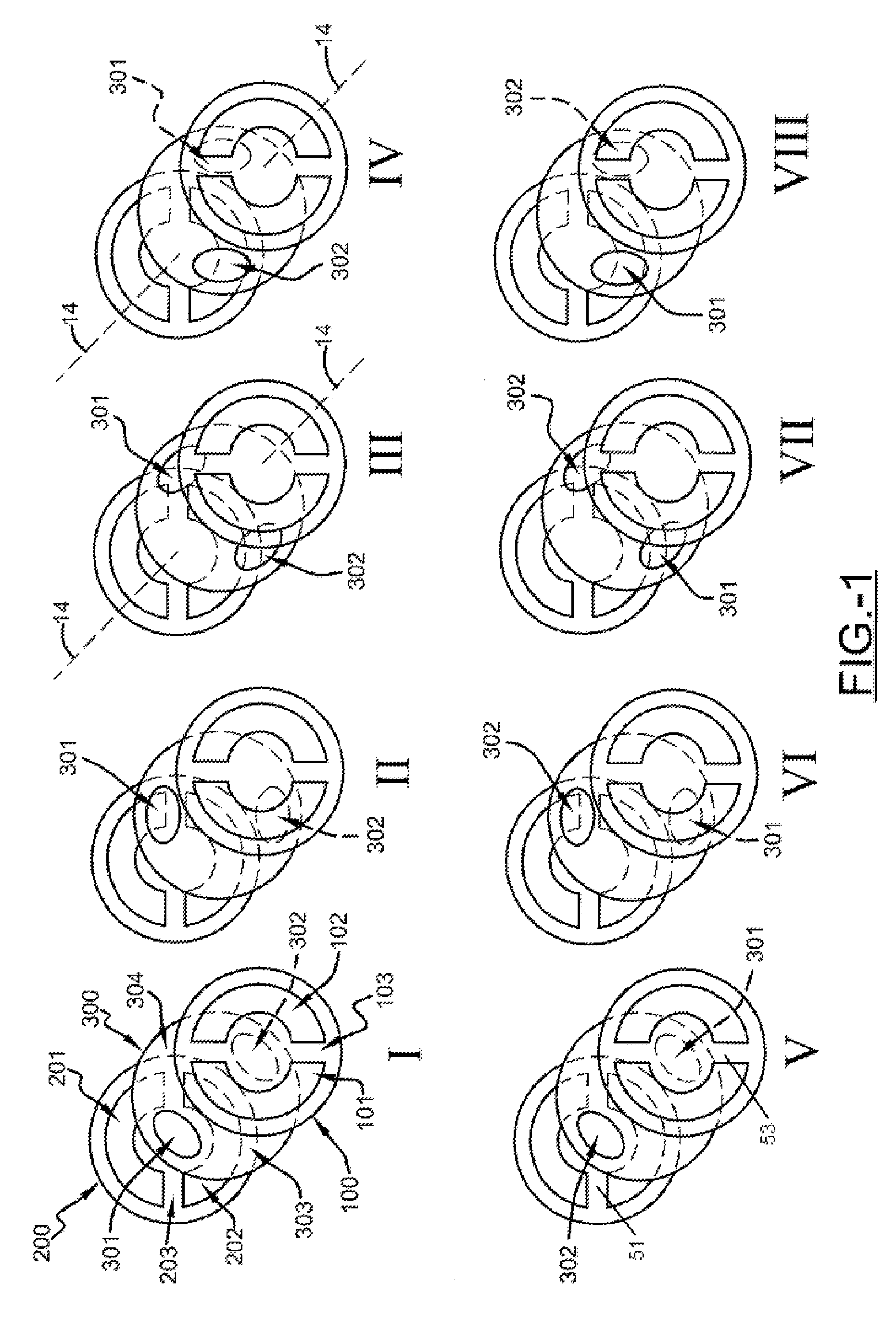Rotary valve assembly
a valve assembly and rotary valve technology, applied in mechanical equipment, transportation and packaging, separation processes, etc., can solve the problems of cigar storage outside the generally accepted limits, complex and expensive process fluid control, and limited use of assembly for fluid flow applications, so as to avoid the detrimental effects of instantaneous pressure changes on system and component performance, and be more flexible.
- Summary
- Abstract
- Description
- Claims
- Application Information
AI Technical Summary
Benefits of technology
Problems solved by technology
Method used
Image
Examples
example 1
[0334]Single adsorbent bed vacuum-pressure swing adsorption process, from a starting position a compressor inlet communicates with ambient air by means of (1) a first aperture of a first valve member, (2) a first aperture of a second valve member and (3) a first through aperture of a third valve member and thereby provides a source of feed gas to the system; and a compressor outlet communicates with an adsorbent bed by means of (1) a second aperture of first valve member, (2) a second aperture of second valve member and (3) a second through aperture of third valve member and thereby provides pressurized air to adsorbent bed.
[0335]Upon relative rotation of third valve member to first valve member and second valve member wherein positional coincidence of apertures of first valve member and second valve member are greater than 0° and less than 180° angular degrees, interconnection and communication simultaneously changes and compressor inlet communicates with adsorbent bed by means of ...
example 2
[0340]Single adsorbent bed pressure swing adsorption process, from a starting position a compressor inlet communicates with ambient air and a compressor outlet communicates with adsorbent bed by means of (1) a first aperture of first valve member, (2) a first aperture of second valve member and (3) a first through aperture of third valve member and thereby provides pressurized air to an adsorbent bed; and ambient air communicates with ambient air by means of (1) a second aperture of first valve member, (2) a second aperture of second valve member and (3) a second through aperture of third valve member and thereby provides an idle position.
[0341]Upon relative rotation of third valve member to first valve member and second valve member wherein positional coincidence of through apertures of first valve member and second valve member are greater than 0° and less than 180° angular degrees, interconnection and communication simultaneously changes and compressor outlet communicates with am...
example 3
[0346]Paired adsorbent bed vacuum-pressure swing adsorption process, from a starting position a first compressor inlet communicates with ambient air, a first compressor outlet communicates with a first adsorbent bed by means of (1) a first aperture of a first valve member, (2) a first aperture of a second valve member and (3) a first aperture of a third valve member and thereby provides pressurized air to a first adsorbent bed; a second compressor inlet communicates with a second adsorbent bed by means of (1) a second aperture of first valve member, (2) a second aperture of second valve member, and (3) a second through aperture of third valve member and thereby evacuates oxygen deplete gas from a second adsorbent bed, and a second compressor outlet provides pressurized oxygen deplete gas from second adsorbent bed to ambient air.
[0347]Upon relative rotation of third valve member to first valve member and second valve member wherein positional coincidence of through apertures of first...
PUM
 Login to View More
Login to View More Abstract
Description
Claims
Application Information
 Login to View More
Login to View More - R&D
- Intellectual Property
- Life Sciences
- Materials
- Tech Scout
- Unparalleled Data Quality
- Higher Quality Content
- 60% Fewer Hallucinations
Browse by: Latest US Patents, China's latest patents, Technical Efficacy Thesaurus, Application Domain, Technology Topic, Popular Technical Reports.
© 2025 PatSnap. All rights reserved.Legal|Privacy policy|Modern Slavery Act Transparency Statement|Sitemap|About US| Contact US: help@patsnap.com



